Original text by: Marina Belova
I have once written the theory of imitating the long-and-short stitch technique, which is used in hand embroidery. Today I will show you what comes of it.
Unfortunately, I do not have the fabric more suitable for such technique — organdy or batiste, for example. But I will use what is available — calico. It is transparent enough to suit my goals.
I decided against creating of the complex design, because you don't need one for testing. So I created a very simple flower pattern in order to use two colors for shading — green for the leaves and red for the petals:
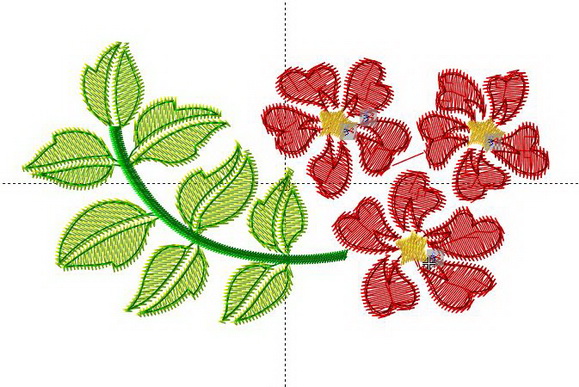
In the original patterns created by the author of this technique, I didn't find any understitching, just the runs between different sections inside the intricate outlines. When I created my design, I suddenly got an idea to use the edge run as the underlay for the fills in order to outline the objects. It later turned out that I was right in using them:
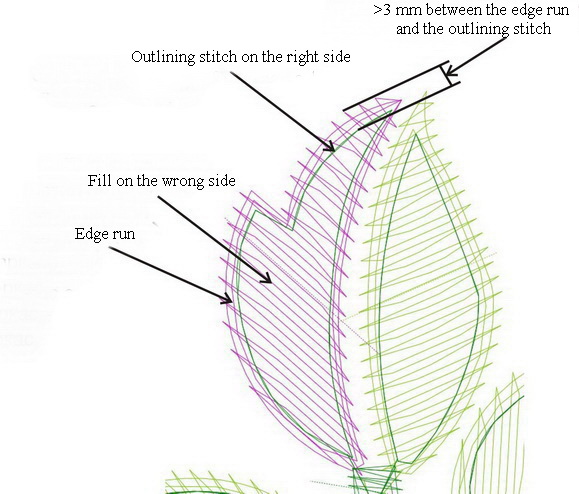
My design that will imitate long-and-short stitch technique looks like this: the stitches on the right side of the fabric are hidden at the distance of approximately 1.5 mm within the outline. they lie inside the underlay, created by edge runs. The fill density is 0.8 mm.
In order to put my idea into action I hooped the water soluble stabilizer:
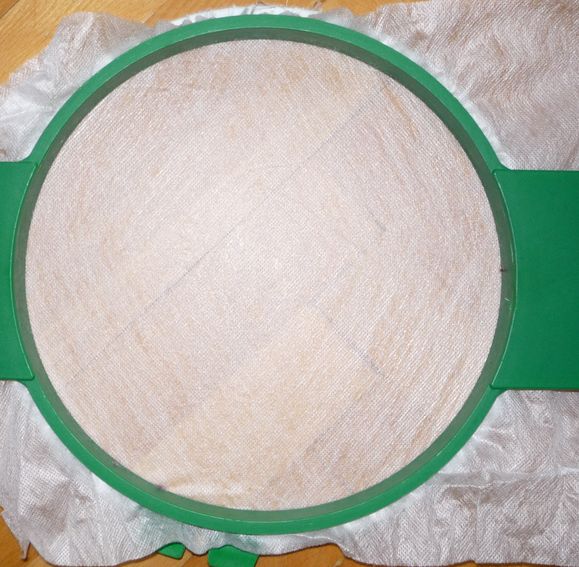
Then I embroidered all the fills right on it (they will show through the fabric under the flowers and leaves):
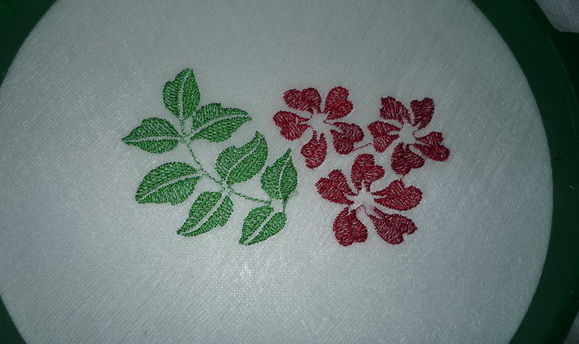
After that, the machine made a stop and I, having sprayed the fabric with temporary spray adhesive, stuck it directly onto the water soluble stabilizer:
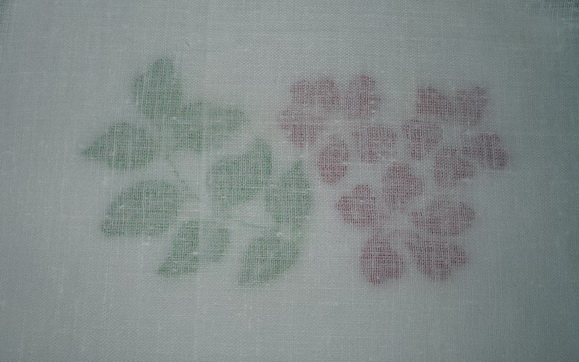
I started the machine again, embroidered all the remaining parts of the design — the outlines of the leaves, flowers, and the flower cups.
Took the hoop off and turned embroidery the wrong side up. The result was not so bad — the outline that stitched filling to the fabric, lay inside the filled areas:
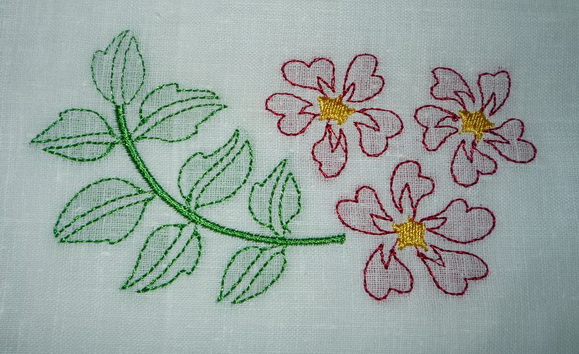
With one exception: perhaps, the stitch ran too near the edge:
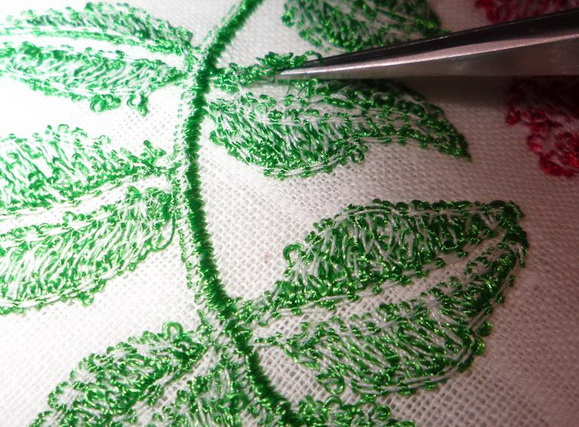
But the filled area didn't fall to pieces, for it was secured by the understitching, which I was right to have inserted. Without it, the filling would fall into pieces. It means that the outlining stitch is necessary. You also need to pay more attention to the distance between the outlining stitch and the edge run. And everything will be just fine.
All that is left is to give the item a trial by washing as I need to remove the water soluble film anyway:
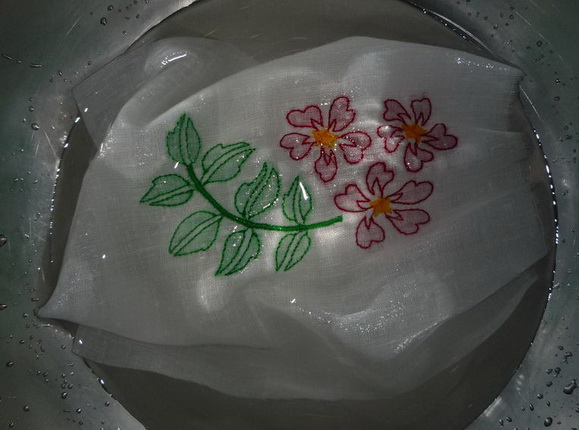
I creased the fabric with all my might, and the embroidery did not fall into pieces, which is good. Below is how it looks after the pressing:
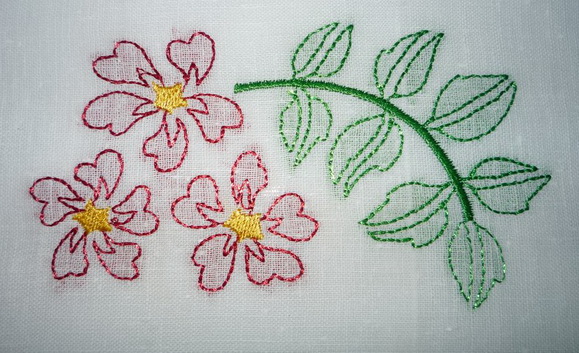
Summary: this technique works, but does not look as neat as hand embroidery of a high quality. But frankly speaking, I'm unable to see the dance of the shadows or nuances that speak of beauty in it. In concerns both the hand and the machine embroidery.
Edited by Irina




There are no reviews to display.